Maya Gabeira: The extreme surfer who went back to tame a monstrous wave
- Published

Maya Gabeira almost died in a surfing accident at Portugal's notorious Praia do Norte beach, but has since broken two world records there
Even before she entered the water, Maya Gabeira knew that she would be in deep trouble if things went wrong on Portugal's famous Praia do Norte beach.
Located in the fishing village of Nazare, 100km north of Lisbon, it is there that some of the world's biggest waves can be found.
So, when the surfer heard the roar of the 20m-high monster collapsing ever closer behind her, she pretty much accepted her likely fate.
"I just thought: 'That's it, I am going to die,'" Maya explains during a phone conversation with the BBC.
A YouTube video with over 500,000 views shows what happened next: a mass of water with an estimated weight of 144 tonnes pummelled the Brazilian.
That's about the same weight as a blue whale, in case you're wondering. One of the bigger ones, at that.
The impact ripped Maya's lifejacket off her body, pushed her underwater and immediately broke one of her legs - it also knocked her unconscious.
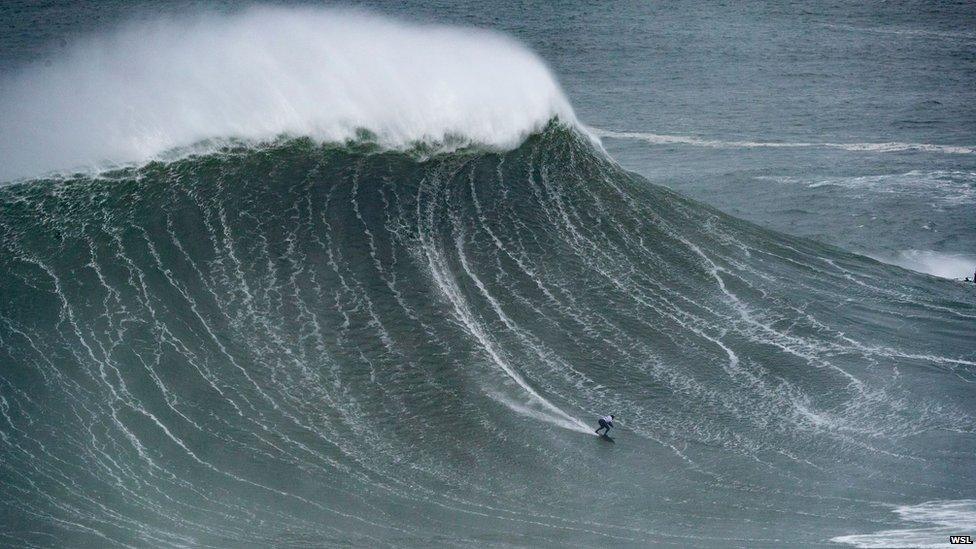
Praia do Norte beach in Nazare is famous for some of the world's biggest - and most dangerous - waves
Revival
The Brazilian was rescued by fellow surfer Carlos Burle, who was accompanying her - Burle was responsible for driving the jet-ski that towed Maya onto the wave.
Repeated waves made the rescue even harder, despite Maya briefly regaining consciousness. It took almost 10 minutes for Burle to get the Brazilian to the shore, where she had to be resuscitated with CPR.
That Maya Gabeira ever thought of going anywhere near a big wave again after the episode in 2013 is already remarkable.
But she went further than simply facing her fears: seven years after almost drowning, Maya has now twice set the world record for the largest wave ever surfed by a woman. Both times at Praia do Norte.
Her latest mark was confirmed by Guinness World Records on 10 September - a 22.4m-high wave surfed on 11 February.
As of 24 September, it is also the biggest wave surfed by anybody in 2020.
The Brazilian, 33, explains how she mounted such a comeback.
"I was badly shaken and injured," she says.
"I had to decide if I was going to try to keep surfing or if it was better to retire. But I wasn't ready to give it up."
Maya made her mind up while still lying on an intensive care unit bed at a Portuguese hospital. Soon after waking up, she asked to watch the video of the accident.
"I wanted to see what had happened, because my memory of the accident stopped when I passed out," she continued.
"It was important to know what I had done wrong."
Physical and mental scars
The accident would cost the surfer four years of her career, as she learned that the "wipe-out" had also caused back injuries. She had to have three operations to address the issue.
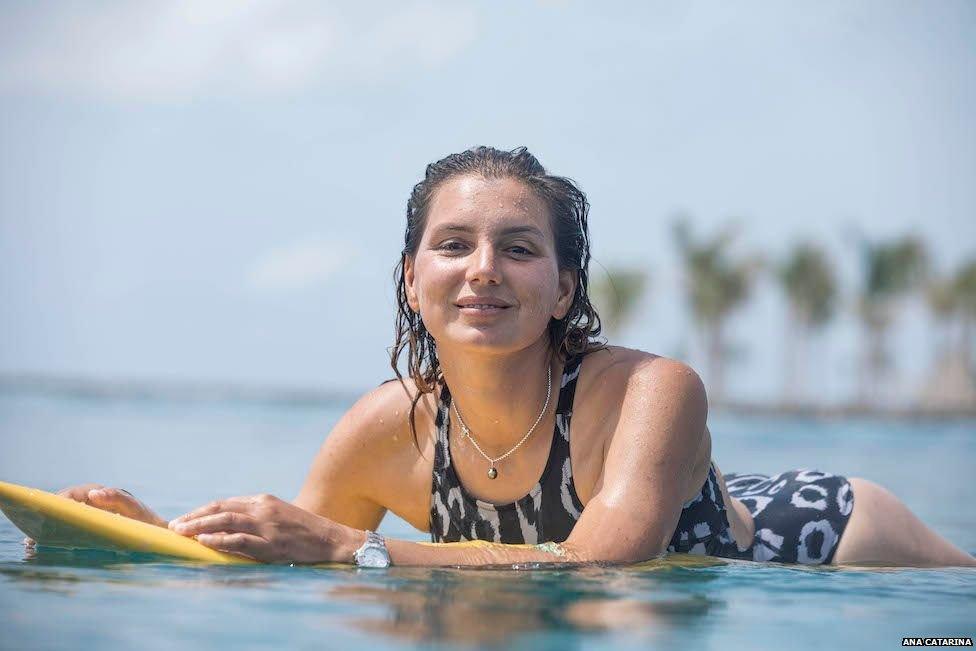
Maya overcame physical and mental trauma to return to surfing
"Every operation would keep me away from the water for months. I just couldn't hit my stride."
But Maya also worried about what the wave had done to her mind.
"My body was hurting, but I had this huge fear of another accident," she explains.
"I was lacking confidence to put myself in that situation again."
Riding monsters
Maya's psychological barriers were particularly problematic for her chosen career.
The Brazilian is a "big rider", a surfer who specialises in monstrous waves.
They are a different breed to those who take part in most professional competitions, which feature much smaller waves.
More famous colleagues don't usually go anywhere near the behemoths surfed by the Brazilian and other "big riders".
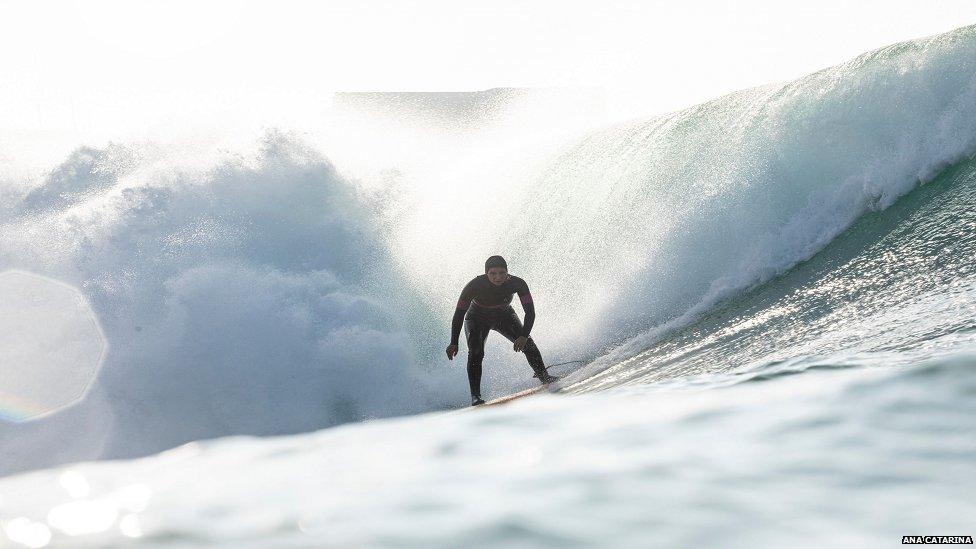
"Big riders" are surfers who specialise in monstrous waves
The main reason for that separation is that monstrous waves demand a different set of skills from those of a surfer. Such waves are too big and too fast for surfers to paddle towards them. Athletes like Maya need to be towed onto them by jet-skis.
Surfers reach speeds of up to 80km/h on waves such as those found at Praia do Norte - much faster than the speeds reached on conventional waves.
In the last few years, Praia do Norte's notoriety has grown even outside the surfing world. Maya knew that Nazare would remain the main hunting ground for "big riders".
If she were to remain in the sport, she would have to tame the wave that almost killed her.
Know your enemy
So in 2015, the Brazilian packed her bags and moved to the Portuguese fishing village, which has a population of a little over 15,000 people.
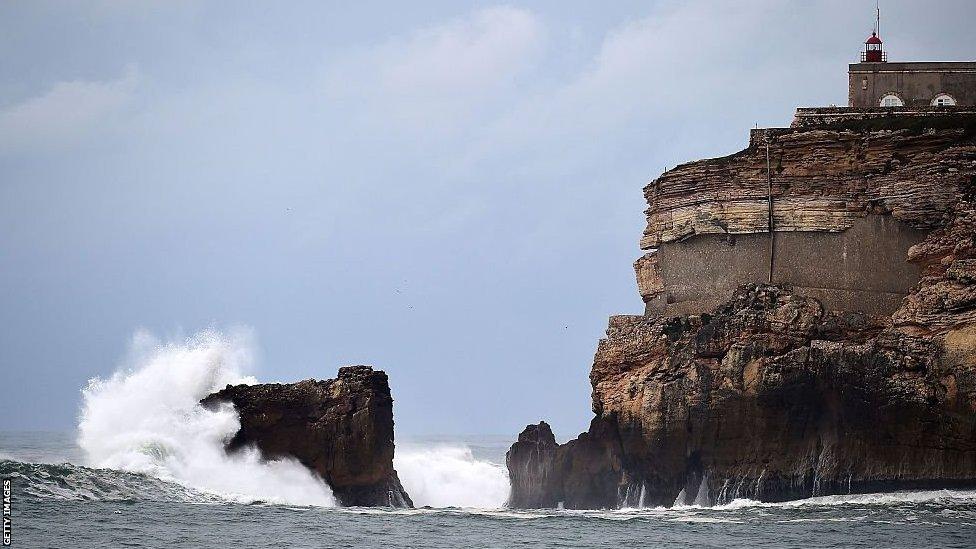
The small fishing village of Nazare is visited by people from all over the world who come to see the monstrous waves formed by Atlantic storms
Maya had been living in Hawaii since the age of 17, just a few years after exchanging ballet shoes for a surfboard in her native Rio de Janeiro.
It was in Hawaii that she fell in love with big-wave surfing - while also noticing it was a boys' club.
"There were almost no women big-riders when I started and I thought that it needed to change," she recalls.
In Nazare, Maya chose a place with a view of the Atlantic Ocean, her new neighbour.
"It made total sense to me to go to Portugal. If I lived in Nazare, I would get familiar with it and understand that wave much better," she says.
"In times of competition, instead of travelling there, I would already be in place. Sleeping in my own bed, having a routine."
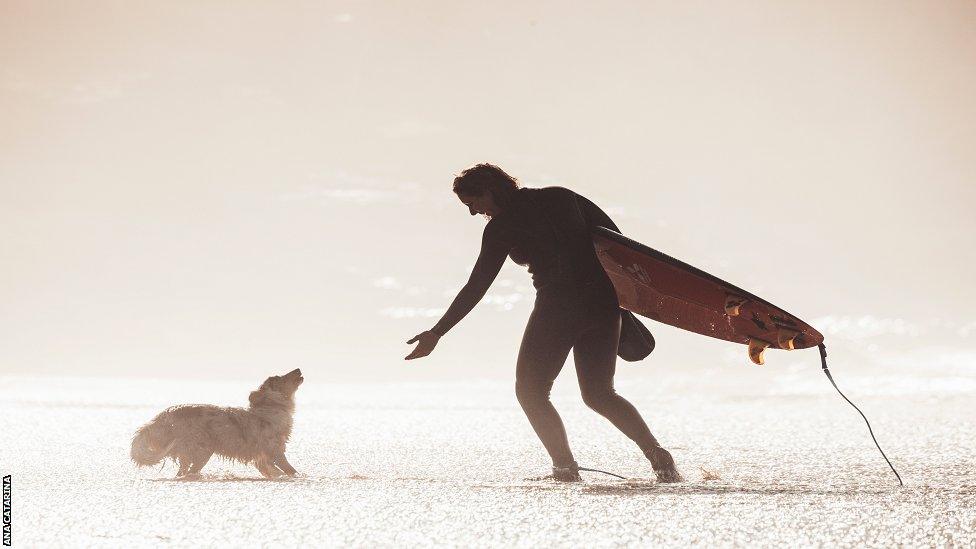
The Brazilian surfer moved to Nazare in an attempt to learn more about the wave that almost killed her
Maya pinpoints 9 November 2017 as the day she finally felt ready in body and mind to face the gigantic waves.
Surprisingly, perhaps, it was another bruising encounter with a beast of a wave that made her mind up for her.
Happy and relieved
But this time things felt different.
"I left the water happy and relieved, despite not being able to finish the wave," she says.
"I got in a difficult situation but didn't die. It turned a page for me because it made me tell myself: 'You will not die every time you face this wave.'"
In January 2018, she tamed a wave at Praia do Norte that an independent expert verified as 20.7m high.
It was the biggest wave ever surfed by a woman. Maya dreamed of a Guinness World Records entry, but at the time there was only one category, bundling together surfers from both sexes.
Allow YouTube content?
This article contains content provided by Google YouTube. We ask for your permission before anything is loaded, as they may be using cookies and other technologies. You may want to read Google’s cookie policy, external and privacy policy, external before accepting. To view this content choose ‘accept and continue’.
Maya claims that she received initial support from the World Surfing League (WSL), the sport's governing body which could officially recognise her feat, but that afterwards everything fell silent.
In a statement in August that year, the WSL said it was "discussing the process" of certifying the wave.
Maya rallied her troops: a petition signed by over 20,000 people publicly pressured the surfing authorities.
In October, two weeks shy of the fifth anniversary of her near-death experience, Guinness finally recognised the record.
"It was a horrible situation," Maya recalls.
"I got so stressed that my competitive performance dipped big time.
"But I did what I needed to do."
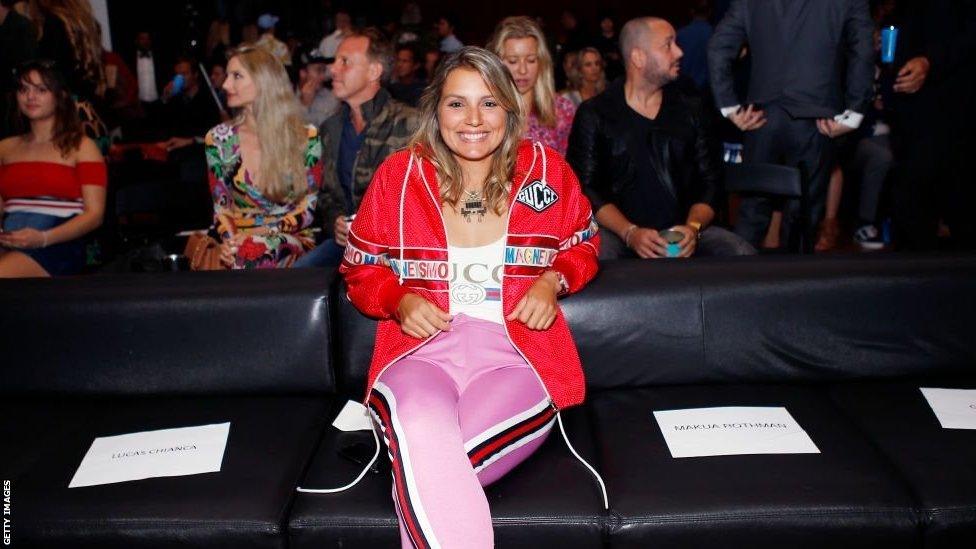
Maya used public support to have her 2018 wave recognised as a world record
The controversy exposed gender inequality issues in surfing, which are surprising in a sport historically associated with an anti-establishment attitude.
It was only in 2019 that male and female competitors started earning equal prize money, and last year there were still more male than female tournaments.
"But the picture is changing, and we need time for things to fall into place now," Maya says.
"There are several signs that the sport authorities are sincerely addressing gender inequality in surfing."
She gives a cheeky example - her second record-breaking wave:
"This time I didn't even need a petition to have my record recognised," the Brazilian laughs.
Allow Instagram content?
This article contains content provided by Instagram. We ask for your permission before anything is loaded, as they may be using cookies and other technologies. You may want to read Meta’s Instagram cookie policy, external and privacy policy, external before accepting. To view this content choose ‘accept and continue’.
Parents with bitten nails
Few people in Brazil were surprised to see Maya taking a stand.
Her father is Fernando Gabeira, a renowned Brazilian politician and journalist who became a famous critic of Brazil's military dictatorship (1964-1985) - he was even a member of MR8, an urban guerrilla group, before being exiled.
"She is fighting for more recognition of women surfers and that is as important as competing," Maya's father tells the BBC.
"As for the fear, she has broken her nose a number of times, so you kind of get used to it."
Neither he nor Maya's mother, fashion designer Yame Reis, tried to dissuade the surfer from making a comeback after the accident in Portugal - despite both parents admitting that they still bite their nails during big wave season.
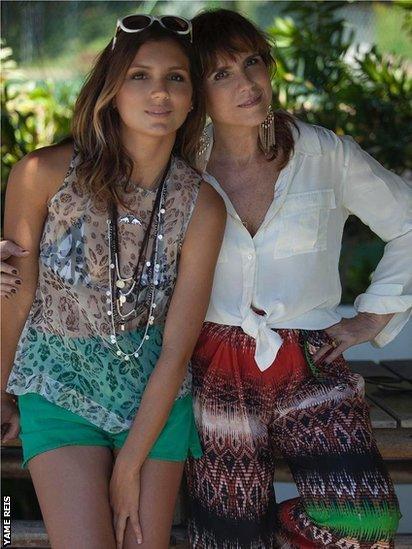
"The best we can do is stand by her," says Maya's mother, Yame Reis
"We have no right to interfere in her life," Reis says.
"She will stop when she wants to. The best we can do is stand by her."
They had tried to put a halt to her passion once before, but aged 17, Maya had totally ignored a parental prohibition to surf Mavericks, a fearsome big-wave surfing spot in northern California.
Reis often visits her daughter in Nazare and makes sure to always say a prayer while watching the ocean.
"You can't be too careful, right?" Reis says, half-jokingly.